Various Options for Treatment of Baker's Cyst
What is a Baker’s cyst? It is a cyst behind the knee that is filled with fluid and creates a bulge. Often, the pain worsens when a sufferer extends their knee fully or when very active. This type of cyst is also known as a popliteal cyst and the formation of the cyst often follows a knee joint problem, such as a torn cartilage or arthritis flare-up. Either of those conditions might cause the production of excess synovial fluid by the knee, leading to a Baker’s or popliteal cyst.
Treatment options for Baker's cyst
There are two groups of Baker's cyst treatment options to choose from and they are traditional methods or natural treatment.
Traditional Treatments include:
- Icing the affected area
- Resting the knee
- Elevating the knee
- Taking OTC pain medication, such as acetaminophen, ibuprofen, or naproxen sodium
- Wearing a compression knee brace
Of course, seeing your doctor when you experience pain and discomfort is an important step if pain persists or swelling increases, especially since the condition could turn out to be something even more serious than a popliteal cyst, and only your doctor can tell you for sure. He or she will probably want to know a few things about your specific condition, its symptoms and timing and will ask you the following questions:
- What is the severity of your symptoms?
- When did you first experience those symptoms?
- Does the pain come and go or is present all of the time?
- Do you experience any swelling or locking of the knee?
- What, if anything, makes your symptoms improve?
- What, if anything, makes your symptoms worsen?
Several treatments that your doctor might recommend for a Baker's cyst may include:
- Draining the fluid with a needle, also known as aspiration
- Physical therapy that is performed using exercise to strengthen the muscles surrounding the knee
- Icing of the affected knee
- A compression wrap on the affected knee
- Walking on crutches in some extreme cases
- Medication, such as cortisone injections for reducing the inflammation in the knee
When an osteoarthritis' associated Baker’s cyst remains swollen even when using arthritis treatment, your doctor may recommend the complete removal of the cyst, especially when it affects a patient’s joint movement. This also could be an option in specific cases where the cyst repeatedly becomes filled with fluid even after it has been drained one or more times.
For starters, the natural or physiotherapeutic methods are basically somewhat the same as more traditional methods and can include:
- R.I.C.E. i.e. Rest, Icing, Compression, Elevation. The first three are self-explanatory and usually the first thing that patients do when they experience the pain and/or discomfort of a popliteal cyst. But, elevation is something that is sometimes overlooked and is a significant healing method that is especially effective when utilized at night.
- Take OTC pain and inflammation relievers, but be sure not to exceed the dosage that is recommended.
- Reduce knee joint irritation by cutting back on all physical activity and finding alternative exercises to do until the swelling subsides.
Although both traditional and natural treatment methods for this condition usually begin with ice and rest for reducing swelling and inflammation, some cases will continue to cause discomfort even after those methods are employed. Unfortunately, traditional methods administered by physicians have not advanced very much in the past ten years or so.
In some extreme cases, surgery may be recommended. But, before you consider the surgery, you might want to try some of these more obscure physiotherapy methods for relieving the bothersome stiffness and pain associated with this disease. Many sufferers prefer trying some of these natural treatments first before consulting their doctor, because it makes them feel more in control of their own health. The following are just some of those physiotherapy methods:
A patch that absorbs excess fluid naturally, thereby reducing swelling:
- Electrotherapy
- Soft tissue massage
- Dry needling
- Hydrotherapy
- Progressive exercises
- Anti-inflammatory advice
- Weight loss when necessary
- Retraining muscles with real time ultrasound
- Prescription of orthotics
- Mobilization
- Crutches
- Range of motion exercises
- Bio-mechanical correction
- Advice regarding activity modification
- Taping for support of the affected knee
Exercises for treatment of Baker's cyst
Exercises to relieve the symptoms of a Baker’s cyst can be quite effective and are often prescribed for patients who suffer from them. They should be done three times a day and you should consult a physiotherapist before trying them.
Quadriceps Contraction Exercise
Sit in an upright position with affected leg outstretched and a rolled-up towel under the back of the knee. Gently tighten thigh muscles by pressing the knee downward into the towel and holding about five seconds. Repeat ten times.
Bend Knee and Straighten Exercise
Lying on your back, gently straighten and bend the affected knee as much as possible without causing more pain. This particular exercise can aid in restoring natural movement of the knee and should be repeated 20 times.
Fulcrum Exercise
Roll up a towel and, while lying on your back, place it under the affected knee. Relax your knee, and then slowly straightening it, tighten the front of the thigh, holding for about five seconds. Repeat ten times.
Hamstring Contraction
Sit with the knees bent at a 45 degree angle, then tighten the hamstring and press the heel into the floor, holding for about five seconds. Repeat ten times.
There are a number of physiotherapy products that can help in the treatment of baker’s cysts by speeding up healing and recovery. These products are available online as well as in stores that carry physiotherapy products and can include:
- Heat packs
- Ice packs
- Resistance bands
- Knee braces
- Compression bandages
- Crutches
- TENS machine
- Swiss balls
- Foam rollers
- Massage balls
So, whether you are suffering from a popliteal cyst for the very first time or you have experienced them before, trying different methods and products until you find the most effective relief for your own personal condition is your best course of action. Be sure to consult your physician or physiotherapist for professional advice before starting any exercises or taking any pills and; whether you find that the tried and true traditional treatment, the natural path, the exercise programs or the physiotherapy products are the most effective for your own personal condition, you will at least know that you are armed with all of the possibilities to achieve effective relief from your condition.
| Written by: | Michal Vilímovský (EN) |
|---|---|
| Education: | Physician |
| Published: | April 28, 2013 at 1:20 AM |
| Next scheduled update: | April 28, 2015 at 1:20 AM |
Related articles
Get more articles like this in your inbox
Sign up for our daily mail and get the best evidence based health, nutrition and beauty articles on the web.


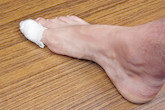
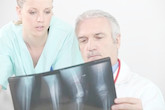


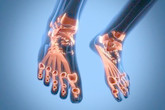
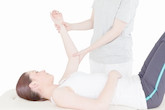
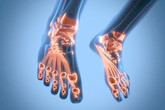
Ache in left arm that you should not ignore
Alkaline water dangers: why you should not drink it
How to Avoid Sleepiness While Studying?
23 Foods That Increase Leptin Sensitivity
Low dopamine (e.g. dopamine deficiency): causes, symptoms, diagnosis and treatment options
Swollen taste buds: the ultimate guide to causes, symptoms and treatment
Thin endometrial lining: causes, symptoms, diagnosis and treatment
Pimples inside nose: the complete guide
Holes in tonsils: definition, symptoms, treatment and prevention
How to deal with an ingrown hair cyst
Allegra vs. Zyrtec vs. Claritin
How to get rid of phlegm (excessive mucus) in throat? Detailed guide to medical and home remedies, symptoms and causes
What causes stomach ache after meals?
Allergy to penicillin and alternative antibiotics
Liver blood test results explained